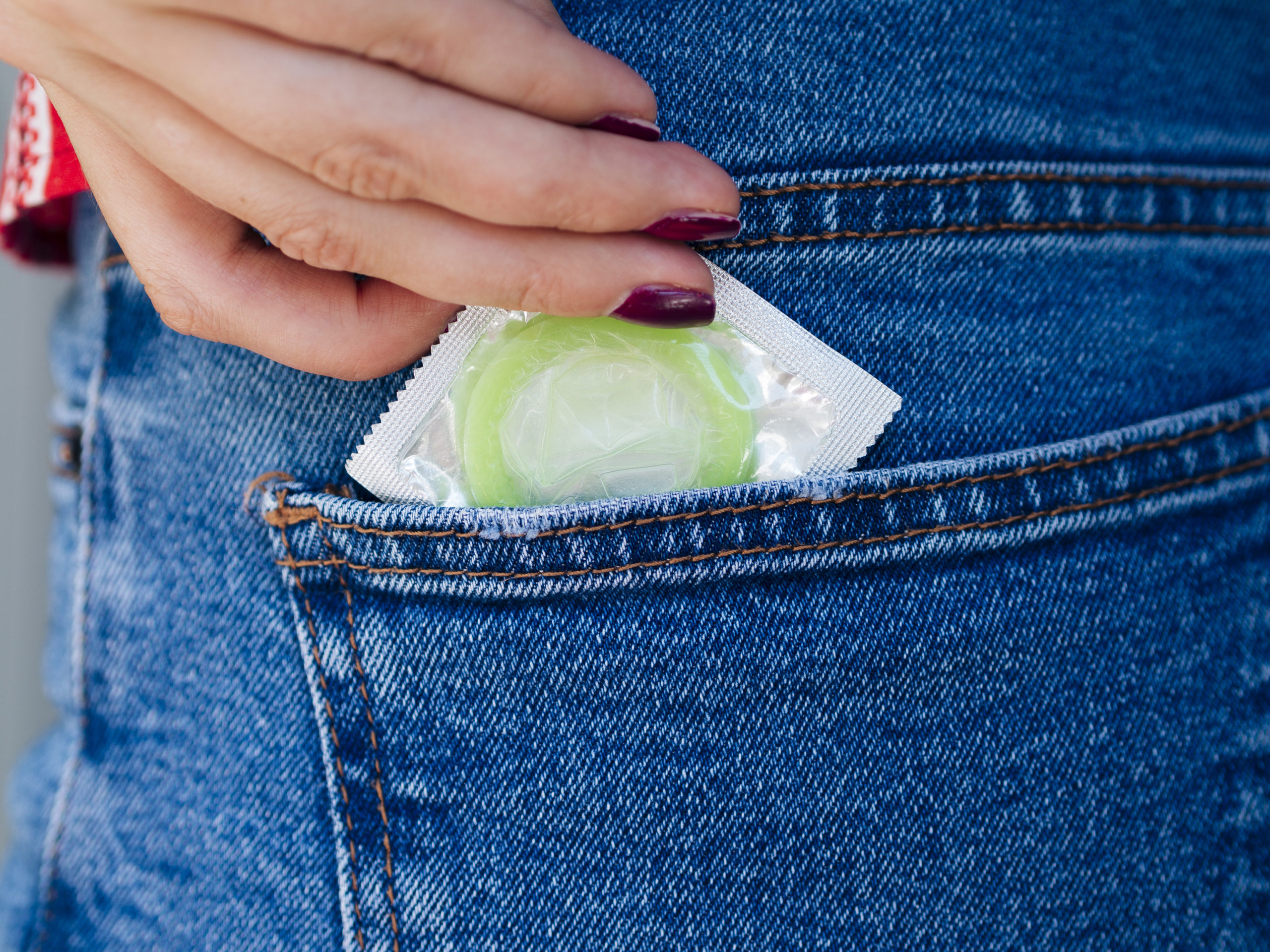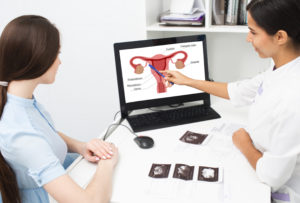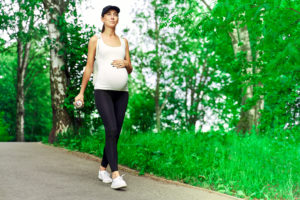
Most people will tell you that breastfeeding does not only provide the newborn baby with necessary nutrients, but that it is also a great way for a mother to bond with her newborn—as well as an important way for the whole family to come together. What is not common knowledge, however, is that breast milk contains antibodies that can also be used to improve your overall health—and you don’t need to be a baby for that to happen! In fact, in many places around the world such as the Guangdong Province in China, breast milk is considered a hot commodity. The main reason for this is that it contains antibodies that combat diseases without causing inflammation.
Ear Infections
One of the ways in which breast milk can help treat ear infections is through the baby’s constant motion of sucking, as this relieves the pressure in the ear cavity. Additionally, many mothers report that a few drops of it in the baby’s ear help ease ear infections. This is due to the antibodies that can be found in breast milk. Ergo, it can also be used as a natural remedy for adult ear infections. Three or four drops at the entrance of the ear canal should be enough for this remedy to work.
Eye Infections
The most common eye infection, pinkeye, is treated with probiotic-laden, non-acidic liquids. Breast milk has been proven to be the most effective of those, tested scientifically and not only because mothers have been using it for a long time as a treatment. A couple of drops should be used in addition to the clear eye drops to treat infectious conjunctivitis. Be sure to consult with your doctor before using breast milk as a treatment of any sort.
Breast Milk as Ointment
The antibodies breast milk contains, more specifically IgA, can help prevent germs from growing on skin injuries. Some drops of breast milk can be used to disinfect an area that has a burning or itching cut. Similarly, it can be used as ointment for baby eczema; baby skin can dry easily and cause eczema which can be soothed when applying breast milk on the suffering area.
Breast Milk as Facial Cleanser
Controversial as it may sound, breast milk is a cost-effective solution to treat acne or skin disorders because of the lauric acid it contains. To use it as an acne solution, make sure to dilute it by first applying cold water on your face or acne-infected area; proceed to apply a few drops of breast milk and allow it to air dry. Wipe clean with a wet towel.
As you would do with any suggested home remedies, make sure that you consult your doctor and that you exercise your best judgement according to what your body needs best.
More
With more and more people working from home, we are all getting accustomed to the “new normal” that expects us to follow a workday routine from home. Without the tangible routine that gets us out of bed, ready for work, and out of the house, we are called to make our own distinctions between work time and down time in our home space.
Here are some tips to help you balance work life and home life, as well as reasonably separate the two:
The routine of getting ready for work in the morning, especially if you have a 9-to-5 schedule, actually helps your body and your mind understand that you are switching from home-version to work-version. Combined with the change in physical space, it is almost as if you switch functions and start your work mode as soon as you leave your home to go to work. However, when the home-version and work-version blend since many of us have to work from home now, the switch may prove more challenging.
One way to trick our brains is to follow the morning routine as usual: get up at the same time, get dressed as if we’re going out of the house to work, prepare ourselves mentally for the workday.
Of course, the challenge of the blend may continue even if we manage to make our brains believe we are “at work” while staying in the house. This is especially true at the end of the workday or when it comes to breaks, since we technically do not leave the designated work area.
To give ourselves the necessary breaks from work, as well as to limit the workday to reasonable hours, it is important to set our own boundaries with time. This could include logging off when it’s time for lunch—or for any other break during the work day, getting up from our desk or the workspace, or even setting up out-of-office replies when we are taking time off. Just because we are working from home does not mean that the workday should bleed into our personal and family time.
Working from home may lead to an obsession with over-productivity: to counter the lack of physical presence in the workplace, both workers and employers feel compelled to push themselves to be overly productive when working remotely. At the very least, this is unrealistic: one’s home does not offer the same resources as one’s workplace. Even if an employee has the luxury of a designated workspace in their home, that does not always guarantee they have the necessary mental and emotional space to do more work than usual.
As such, instead of pushing for more productivity when the personal and work boundaries are so blurry, we should be prioritizing the most important work tasks and focusing on those.
More
 After what felt like a never-ending winter, Buffalo has enjoyed beautiful weather so far this summer! Outdoor activities with family and friends are a safe way to adhere to social distancing, while exploring the most scenic sites in Buffalo. The region has countless hiking trails and many beautiful creeks. Additionally, Western New York is home to some incredible wildlife, including deer, foxes, hawks, and bald eagles.
After what felt like a never-ending winter, Buffalo has enjoyed beautiful weather so far this summer! Outdoor activities with family and friends are a safe way to adhere to social distancing, while exploring the most scenic sites in Buffalo. The region has countless hiking trails and many beautiful creeks. Additionally, Western New York is home to some incredible wildlife, including deer, foxes, hawks, and bald eagles.
Here is our list of the best nature-related day trips within an hour’s drive from Buffalo.
- Chestnut Ridge Park
One of Erie County’s best attributes, Chestnut Ridge Park is located about a half hour outside of Buffalo—just past Orchard Park. This huge park offers beautiful scenery for hiking, biking, or even driving. The park includes picnic areas and tennis courts.
- Eternal Flame Falls at Chestnut Ridge Park
This interesting natural phenomenon is tucked away off the beat and path in Chestnut Ridge Park. The waterfall contains a natural gas spring with a flame that can reach four to eight inches. The best time to see the falls at full water capacity is during the spring, after plenty of rain. However, the half-mile hike is scenic and can also be an enjoyable outing in the dry season.
- Tifft Nature Preserve
This urban-adjacent gem is located only five minutes from downtown Buffalo on the Outer Harbor. Tifft is a massive 264-acre preserve with five miles of trails and boardwalks. The facilities offer fishing and guided tours. Additionally, Tifft is an ideal spot for photographers, as it’s designated as an ‘important bird area’ by the Audubon Society. Many at-risk species, including bald eagles, red-shouldered hawks, and short-eared owls can be found among the 265 bird species at the preserve.
- Eighteen Mile Creek
If you are looking for a less urban/more remote option, check out Eighteen Mile Creek in Hamburg. This 466-acre undeveloped park offers vast hiking trails with fishing and wildlife viewing. Parking near South Creek Road leads to a trailhead that continues along the rim of the creek for about five miles.
- Reinstein Woods Nature Preserve
Located in the suburb of Depew, this unique 292-acre complex offers lush forests, ponds, and wetlands. Popular walking trails include the Lily Pond Loop where visitors can see ducks, geese, turtles and other aquatic wildlife, and the Beech Tree Trail that takes visitors through a beech-maple forest. Many native species of wildlife to Western New York, including white-tailed deer, beavers, waterfowl, red-tailed hawks, pileated woodpeckers and blue herons, can be found here.
- Knox Farm State Park
Those looking for more than just hiking and fishing, should check out the biking and equestrian trails at Knox. This state park occupies the former estate of the Knox family near the idyllic village of East Aurora.
More

Millions of American’s are infected with sexually transmitted diseases (STDs) every year. STDs are passed from person to person through intimate physical contact, including vaginal, oral, and/or anal sex. Many STDs show no signs or symptoms (known as asymptomatic), however, even with no symptoms, the infection can be passed to sexual partners. Therefore, STD testing should be conducted regularly for anyone sexually active.
Types, Symptoms, and Treatments
Chlamydia
As the most commonly reported STD in the U.S., chlamydia is a bacterial infection of the genital tract spread through vaginal, oral or anal sex. It can be hard to detect because not all women have symptoms. When present, symptoms are usually mild and may include pain when urinating, vaginal discharge, lower abdominal pain, and bleeding between periods.
Treatment: chlamydia can be easily cured with antibiotics.
Gonorrhea
Another bacterial infection in the genital tract, gonorrhea can also grow in your mouth, throat, eyes, and anus. Symptoms can start as early as 10 days after exposure, but many people will not experience symptoms for months. Symptoms may include a thick vaginal discharge, heavy bleeding during or between periods, pain when urinating or during bowel movements, and anal itching.
Treatment: gonorrhea can be cured with prescribed medications.
Syphilis
Another bacterial infection, syphilis affects the genitals, skin and mucous membranes, but it can also involve other parts of your body, including the brain and heart. Symptoms occur in three stages, with early signs being a small painless sore at the sight of infection. As symptoms progress, they may include penny-sized sores, fever, fatigue, soreness, and enlarged lymph nodes. If untreated, syphilis can lead to blindness, paralysis, dementia, and numbness.
Treatment: Syphilis can be cured with the right antibiotics, however, treatment will not undo any damage that the infection has already caused.
Trichomoniasis
This common STD is caused by a microscopic, one-celled parasite. Symptoms typically occur in five to 28 days of exposure and range from mild to severe. Symptoms may include clear or cloudy vaginal discharge, vaginal order or itching, and pain when urinating.
Treatment: trichomoniasis can be cured with a single dose of antibiotics.
Human papillomavirus (HPV)
Most sexually active people will get HPV at some point in their lives. HPV puts women at higher risk of cervical cancer. There are more than 100 strains of HPV and many do not cause symptoms, however, certain strains will cause genital warts.
Treatment: There is no treatment for the virus itself, but there are treatments for health problems caused by HPV. Additionally, there is a safe and effective vaccination to protect against HPV that is recommended for anyone 11 years or older.
Hepatitis
Hepatitis A, B, and C are contagious viral infections that affect the liver, however, hepatitis B and C are more serious. Not all people will develop symptoms, but those that do may experience fatigue, nausea, abdominal pain, fever, muscle pain, itching, loss of appetite, or jaundice.
Treatment: hepatitis A and B often go away within four to eight weeks on their own. New drugs are being used to treat and possibly cure hepatitis C.
Genital Herpes (HSV)
A highly contagious STD caused by a type of the herpes simplex virus (HSV). HSV enters the body through small breaks in the skin or mucous membranes. Signs and symptoms are very mild and frequently go unnoticed, so many people with HSV never know they have it.
Treatment: While there is no cure for herpes, medication can reduce symptoms and make it less likely to spread to others.
HIV
An infection with the human immunodeficiency virus, HIV interferes with the body’s ability to fight off viruses, bacteria, and fungi that cause illness. It can lead to AIDS, a chronic, life-threatening disease. Early symptoms may include headache, fever, sore throat, swollen lymph glands, and fatigue.
Treatment: There is no cure, but treatment will help to prevent complications and spreading.
Takeaway
As shown above, some STDs can be “easily” cured in a simple dosage of antibiotics, while others cannot be cured. The safest measure is to use protection in the form of latex condoms. Adults in monogamous relationships should have both partners checked for STDs before considering unprotected intercourse. Lastly, have all young adults 11 to 26 vaccinated against HPV.
More
 The loss of a pregnancy before the 20th week is what we usually refer to as a miscarriage. Even though we know about 10% to 20% of pregnancies result in miscarriages, the actual number is much higher. This is because most miscarriages happen so early on in the pregnancy that a woman may not have realized she is pregnant. It is a common misconception to think of a miscarriage as a failed pregnancy, but this is not the case. A miscarriage suggests that the fetus is not developing normally, and therefore the body cannot carry the pregnancy to term safely.
The loss of a pregnancy before the 20th week is what we usually refer to as a miscarriage. Even though we know about 10% to 20% of pregnancies result in miscarriages, the actual number is much higher. This is because most miscarriages happen so early on in the pregnancy that a woman may not have realized she is pregnant. It is a common misconception to think of a miscarriage as a failed pregnancy, but this is not the case. A miscarriage suggests that the fetus is not developing normally, and therefore the body cannot carry the pregnancy to term safely.
Symptoms
These symptoms refer to miscarriages that occur before the 12th week of pregnancy:
- Vaginal spotting or even bleeding
- Fluid or tissue passing from your vagina
- Cramping in your abdomen or lower back
It is actually quite common for women to experience spotting or bleeding in the first trimester, and it does not necessarily lead to a miscarriage. However, if you do pass fetal tissue, place it in a clean container and take it to your health care provider, or to the hospital, for analysis.
Causes
The main cause of a miscarriage is the abnormal development of the fetus, and half of known miscarriages are associated with either missing or extra chromosomes. These chromosome problems are not inherited from the parents, but rather occur as the embryo divides and grows.
Chromosomal abnormalities may lead to:
- Blighted ovum: when the embryo does not develop at all
- Intrauterine fetal demise: when the embryo forms bust stops developing before any symptoms of pregnancy are noticeable
- Molar pregnancy and partial molar pregnancy: these pregnancies have to do with abnormal growth of the placenta, and there is either no fetal development, or abnormal fetal development. In both cases, the uterus miscarries the fetus.
In fewer cases, the health condition of the mother may lead to a miscarriage. Health conditions such as uncontrolled diabetes, infections, hormonal problems, thyroid disease, and uterus or cervix problems can result in the mother’s body terminating a pregnancy.
Diagnoses
There is a multitude of tests you can get done to confirm whether you have experiences a miscarriage or not:
- Pelvic exam
- Ultrasound
- Blood, tissue and chromosomal tests
Future Pregnancies
Many women are worried about carrying on future successful pregnancies after a miscarriage, or even becoming pregnant. It is actually possible to conceive even in the first menstrual cycle immediately following a miscarriage, so the main factor to consider in this case is whether you are physically and emotionally ready. You should remember that a miscarriage is rarely a repeat phenomenon: most women experience it once and go on to have successful pregnancies after. Less than 5% of women have two consecutive miscarriages, and even 60% to 80% of women with undiagnosed causes of miscarriage have healthy pregnancies. If you do decide to try and conceive after a miscarriage, be sure to consult your health care provider for guidance.
More

Even though they are not very common, some women are born with an abnormal uterus, including a defect in the size, shape, or structure of the uterus. The two most common types are called heart-shaped uterus and tipped uterus.
What is commonly referred to as a heart-shaped uterus is actually a “bicornuate uterus.” It occurs when the fallopian tubes come together on top of the main uterine cavity and form a shape that resembles a heart. Romantic as this may sound, uterine irregularities may cause complications during pregnancy.
A tipped uterus (officially referred to as a retroverted uterus) is a type of uterus that tilts in a backward position at the cervix instead of forward. A tipped uterus can either be a variation of pelvic anatomy by birth, or it can develop as women mature. Less romantic-sounding than the heart-shaped uterus, a tipped uterus may also be the result of pelvic scarring or adhesions.
Symptoms
Neither condition has particularly noticeable symptoms, and both are usually determined when women get either a pelvic exam or an ultrasound. Common symptoms of an abnormal uterus include the following:
| Heart-Shaped Uterus |
Tipped Uterus |
| Irregular vaginal bleeding |
Lower back pain during intercourse |
| Repeated miscarriages |
Trouble inserting tampons |
| Painful periods and abdominal discomfort |
Increased urinary frequency and UTIs |
| Pain during intercourse |
Protrusion of the lower abdomen |
Keep in mind that in the case of a heart-shaped uterus the symptoms may not feel out of the ordinary, as you have most likely had it your whole life.
Causes
Women with heart-shaped uteri are born this way, so the cause is simply the way the uterine cavity and fallopian tubes are shaped. However, a tipped uterus is not always a birth defect and its possible underlying causes warrant attention:
- Endometriosis: endometrial scar tissue or adhesions may cause the uterus to stick in a backward position.
- Fibroids: uterine fibroids can cause the uterus to tilt backward.
- Pelvic Inflammatory Disease (PID): if left untreated, PID can cause scarring that has a similar effect to endometriosis.
- History of pelvic surgery or prior pregnancy: in both, or either, case the ligaments that hold the uterus in place can become stretched/ scarred and cause the uterus to tilt backward.
Pregnancy and Fertility
In the case of a heart-shaped uterus, the chances of conceiving do not become less, nor is your fertility affected. It has, however, been suggested that this uterine shape is more common in women who are infertile.
A heart-shaped uterus increases the chances of a miscarriage in the later stages of a pregnancy, or an early delivery of the baby. These cases are connected to either reduced uterine capacity or irregular uterine contractions. Additionally, babies born to mothers with a heart-shaped uterus are four times more likely to develop birth defects. It is also more likely that you will have to give birth via a C-section.
Though a tipped uterus does not affect a woman’s ability to conceive, it is often connected to other conditions that may lead to fertility issues. These include endometriosis, pelvic inflammatory disease (PID) and fibroids. When necessary, infertility treatments such as intrauterine insemination (IUI) or in vitro fertilization (IVF) assist women with these diagnoses to achieve pregnancy.
More
 Exercise is the best way to help your body cope with the physical changes during pregnancy. Even if you did not exercise before you were pregnant, it’s a great time to start. Experts recommend 30 minutes of moderate-intensity exercise at least five days a week. This recommendation is actually the same for all adult women. However, exercise during pregnancy is especially important because it can reduce back pain and ease constipation, bloating, and swelling. Regular exercise also boosts your mood and energy, while helping you sleep better. If that’s not enough, it will also help your body prepare for labor and ward off excess baby weight.
Exercise is the best way to help your body cope with the physical changes during pregnancy. Even if you did not exercise before you were pregnant, it’s a great time to start. Experts recommend 30 minutes of moderate-intensity exercise at least five days a week. This recommendation is actually the same for all adult women. However, exercise during pregnancy is especially important because it can reduce back pain and ease constipation, bloating, and swelling. Regular exercise also boosts your mood and energy, while helping you sleep better. If that’s not enough, it will also help your body prepare for labor and ward off excess baby weight.
First Trimester
- Walking is the easiest way to get active. You can get started right away—all you need is a decent pair of sneakers. A moderate pace of about 1 mile every 20 minutes will raise your heart rate, without putting too much strain on muscles and joints.
- Yoga is another exercise that needs minimal equipment—all you need is comfortable clothes and a gym mat. Through a combination of stretching, aerobic-type exercises, and deep breathing, yoga will tone your body, while also resetting your mind and reducing overall stress.
- Water aerobics requires a pool or gym membership, but it’s a great way to get active because it’s low impact. Swimming classes are especially gentle on joints, legs, and ankles.
- Jogging and running are goods way to get your blood pumping, but they should be reserved for experienced athletes. Pregnancy is not a good time to start running for the first time.
- Strength training helps build muscles in your arms to prepare for carrying the baby around. When pregnant it’s advised to avoid excessive weight and exercises where you are lying on your back.
- Low-Impact Aerobics are still okay in your first trimester, but can be more straining than other options. If you are already active with aerobics, it’s safe to keep it up as long as you are being careful. It’s always best to choose aerobics classes or videos geared toward pregnant women.
Second Trimester
While you may need to adjust your habits based on your changing body, there is no reason to cut back on exercising during your second trimester. In fact, it’s highly recommended to continue getting 30 minutes of moderate exercise each day.
Even more so than the first trimester, choose low impact exercises such as walking, yoga, and swimming. Yoga is still a great exercise to help reduce stress, calm your mind, and strengthen your body. However, in the second trimester, it’s best to avoid yoga poses where you are lying on your back for more than a moment or two because the weight of your enlarging uterus could compress major blood vessels and restrict circulation to you and your baby. Motionless standing, like tree pose, should be avoided as it can restrict blood flow.
Third Trimester
For the final trimester, you should focus solely on low-impact, easy exercises. Keep up your routines and continue doing what has felt good during your pregnancy so far. Walking, yoga, and water aerobics are great exercises for your third trimester.
Intense strength training such as ab workouts, push-ups and planks should be avoided. It’s also best to avoid exercises where your balance is challenged by using only one leg at a time.
Takeaway
Before you begin any exercise regimen while pregnant, talk to your OBGYN. They can help you build an ideal fitness plan based on your current fitness levels, and any possible unique risk factors.
More
 What is it?
What is it?
A urinary tract infection (UTI) is an infection that takes place in the urinary system and can appear at any part of it, including your kidneys, uterer, urethra, and/or bladder. The lower urinary tract, which includes the bladder and the urethra, is most at risk for becoming infected. While the upper tract, where the kidneys and uterer are located, may also get infected, these are usually more severe infections. A UTI is one of the most common infections, and it is usually caused by microbes—mostly bacteria.
What causes it?
UTIs happen when bacteria enter the urinary tract through the urethra and multiply in the bladder. Although our bodies usually keep out microbe invaders, sometimes this does not happen as our defenses may fail. When this is the case, bacteria can grow into a full blown infection in the urinary tract.
The bladder is usually infected by Escherichia Coli (E.Coli) which is a bacteria commonly found in the gastrointestinal tract (GI). It is likely that through this you may develop cystitis, and the likelihood of that increases for women who are sexually active. However, due to female anatomy and the close distance between the anus and the urethra, the risk of cystitis is always present. This also means that the urethra can become infected, as bacteria from the anus may spread to the urethra. Sexually transmitted diseases such as herpes, gonorrhea or chlamydia and mycoplasma may also cause urethritis.
Some UTIs can also be the result of fungi and more rarely by viruses.
What are the symptoms?
You should remember that UTIs don’t always come with symptoms, and the symptoms are different between lower tract infections and upper tract ones.
Upper Tract Symptoms:
- Fever and nausea
- Chills
- Pain in upper back and sides
- Vomiting
Lower Tract Symptoms:
- Strong urge to urinate, usually doesn’t go away
- Burning sensation upon urinating
- Increased frequency of urination without much urine
- Bloody and/or cloudy urine
- Strong-smelling urine
- Pelvic pain in women
- Rectal pain in men
How can I treat it?
The most common way to treat a simple UTI is with prescribed antibiotics, but the type and treatment always depends on the type of UTI and where it’s located.
Simple UTIs are usually treated with drugs such as trimethoprim/sulfamethoxazole, Fosfomycin, Nitrofurantoin, cephalexin or ceftriaxone. Symptoms may clear up in the first few days of taking the antibiotic, but you may need to continue it for a week or more. You should always follow your doctor’s orders on taking the antibiotics and take the full course as prescribed.
Upper tract UTIs and long-term infections will most likely require different treatments, and even though there are some preventative measures you can take for UTIs, there are no home remedies that can fully treat them.
To prevent UTIs, it is suggested that you have a high water intake and drink plenty of liquids. You can also drink cranberry juice, though studies have no conclusive evidence that cranberry juice alone prevents UTIs. You should also empty your bladder soon after intercourse, and always wipe from front to back to eliminate the chance that GI bacteria will reach the urethra. You should also avoid potentially irritating feminine products and consider changing your birth control method—especially if it is a diaphragm or unlubricated condoms as those contribute to bacterial growth.
More
 The debate on breast care is ongoing with two main schools of thought: those who support the idea that bras are harmful and those who argue that bras are not harmful. Though there may be a gray area, the basic arguments surrounding the effectiveness of bras and their contribution (or not) to breast care seem to fall under these two categories. To help clear up some of the uncertainties, the following bra myths are explained.
The debate on breast care is ongoing with two main schools of thought: those who support the idea that bras are harmful and those who argue that bras are not harmful. Though there may be a gray area, the basic arguments surrounding the effectiveness of bras and their contribution (or not) to breast care seem to fall under these two categories. To help clear up some of the uncertainties, the following bra myths are explained.
Bra Myths
- Bras are Linked to Breast Cancer
This is probably the most common myth that circulates, claiming that wearing a bra increases the chances of developing breast cancer later in life. However, there is no scientific basis for this claim as of yet. According to a 2014 study on 1500 women, there is no correlation between wearing a bra and breast cancer risk. There are other physical and behavioral factors that contribute to the risk of breast cancer, but there is no direct correlation between those and whether you choose to wear a bra or not.
- Bras Stop Breasts from Sagging
When refuting this myth, it is important to consider that bras can rest on many places on women’s chests: some are high, some low, some more to the side, or in the middle, and the fullness changes as you go through your menstruation cycle and other hormonal factors you may be experiencing. As such, the firmness and elasticity of your skin are genetically determined and cannot be fully determined by a product whose use alters day by day. Other factors such as rapid weight gain or loss, as well as smoking may affect the elasticity of your skin.
On the other hand, there are those who claim that wearing a bra will make your breasts sag. As with the argument that a bra stops breasts from sagging, we should remember that—again—elasticity and firmness of skin is genetically determined and behavioral and physical factors may alter it.
- Most Women Wear the Wrong Bra Size
Though this statement may have an element of truth in it, there are no conclusive studies to prove that women make extremely detrimental choices when buying bras. It is understandable that there may be minor mistakes made, such as choosing a design that doesn’t quite fit your body or supports your daily activity habits, but most women will purchases bras that more or less fit their chest area and make them feel comfortable. After all, there is no specific guaranteed that we wear the right bra at any given moment, as our hormones and physical condition (swelling, sweating, sitting etc.) affect our breasts day by day.
As with most other arguments around the safety of bras, some disagree with the idea of wearing a bra in your sleep. There is no scientific evidence to prove that sleeping with a bra on will harm you, and some doctors may even recommend it if your breasts feel sore. If you do choose to sleep wearing a bra, it is recommended that you pick out a lightweight, non-underwire bra. It should not be too tight, neither have parts that dig in as you want to avoid it causing skin/breast irritation or disrupt your sleep.
Takeaway
As with anything else you do for your health, you should make sure that you are comfortable in the bras you choose to wear. Consult your doctor if you experience any persistent or unusual breast pain or if you choose to change your bra habits and are concerned about your breast health.
More
Although it might be surprising, the American Academic of Pediatrics (AAP) has evidence that common allergies, such as peanuts, can be prevented with the early introduction of foods to an infant’s diet. The two known factors are nutrition can play a role in preventing or minimizing allergies and that children can be predisposed to allergies based on family history.
As such, the AAP suggests that there is no reason to not introduce common allergens in a child’s diet early on, as you would introduce any other food and nutritional source. Early peanut introduction into an infant’s diet, in infant-safe forms after other solid foods are introduced, is also suggested and for further information you can consult the guidelines developed by the National Institute of Allergy and Infectious Diseases (NIAID), which is endorsed by the AAP.
Common allergens found in eight major groups of food are responsible for approximately 90% of all food allergies.
- cow milk
- eggs
- fish
- crustacean shellfish
- tree nuts
- peanuts
- wheat
- soybean
General guidelines prompt parents and caretakers to slowly introduce the eight major food groups to the infant’s diet when he/she has already tolerated solid food. The first taste should be at home, and you can gradually increase the intake over a span of three to five days if no reactions occurs.
In addition to the suggestion of introducing foods that are known to have common allergens, the AAP is currently researching the correlation between the prevention of food allergies through the introduction of allergenic foods in the infant’s diet and maternal diet, breastfeeding, and hydrolyzed formulas. So far, the major finding that concerns most mothers is that restricting your diet during pregnancy or when breastfeeding does not seem to be related to preventing allergies in infants. Similarly, according to research, the use of hydrolyzed formula does not prevent allergies, even in infants and children who are at high risk for allergic disease.
Despite the new research findings, and the new dietary suggestions, it is always advisable to consult with your child’s doctor (pediatrician or allergist) about the symptoms of allergies and whether or not your child ought to be tested.
This is especially important if your child has already had an allergic reaction to a food, has a known food allergy, or a positive blood test to foods. If your child has a sibling that has exhibited a peanut allergy, be careful on how you introduce allergens into the diet, as well as if your infant has persistent eczema that does not improve with treatment.
If your infant has moderate to severe eczema which is being treated with prescription medication or an egg allergy, then they are at high risk for other food allergies and testing for peanut allergy should be prioritized, and the introduction of any foods containing peanuts in their diet should be closely monitored, even though this introduction can start taking place as early as four to six months of age.
More










